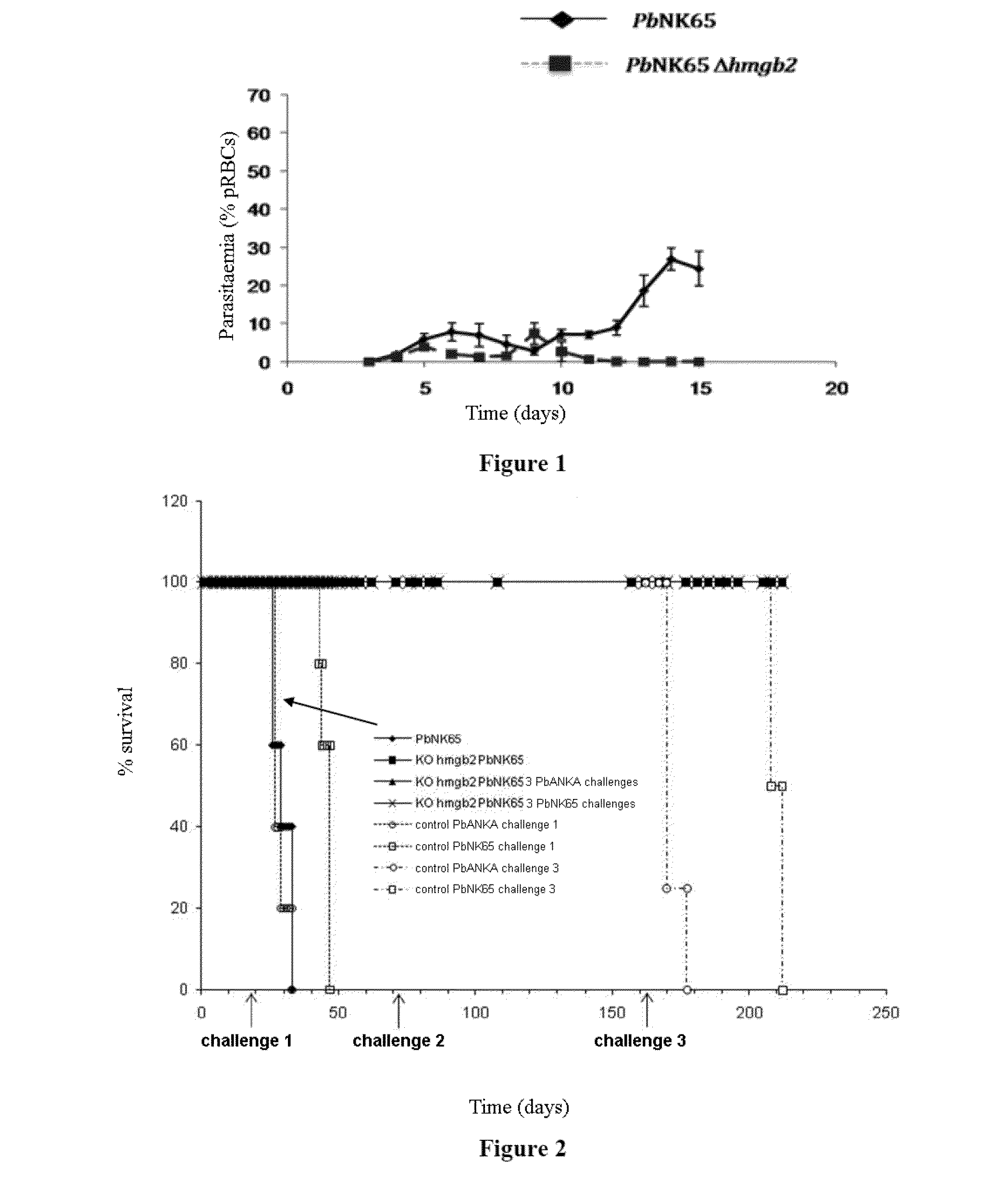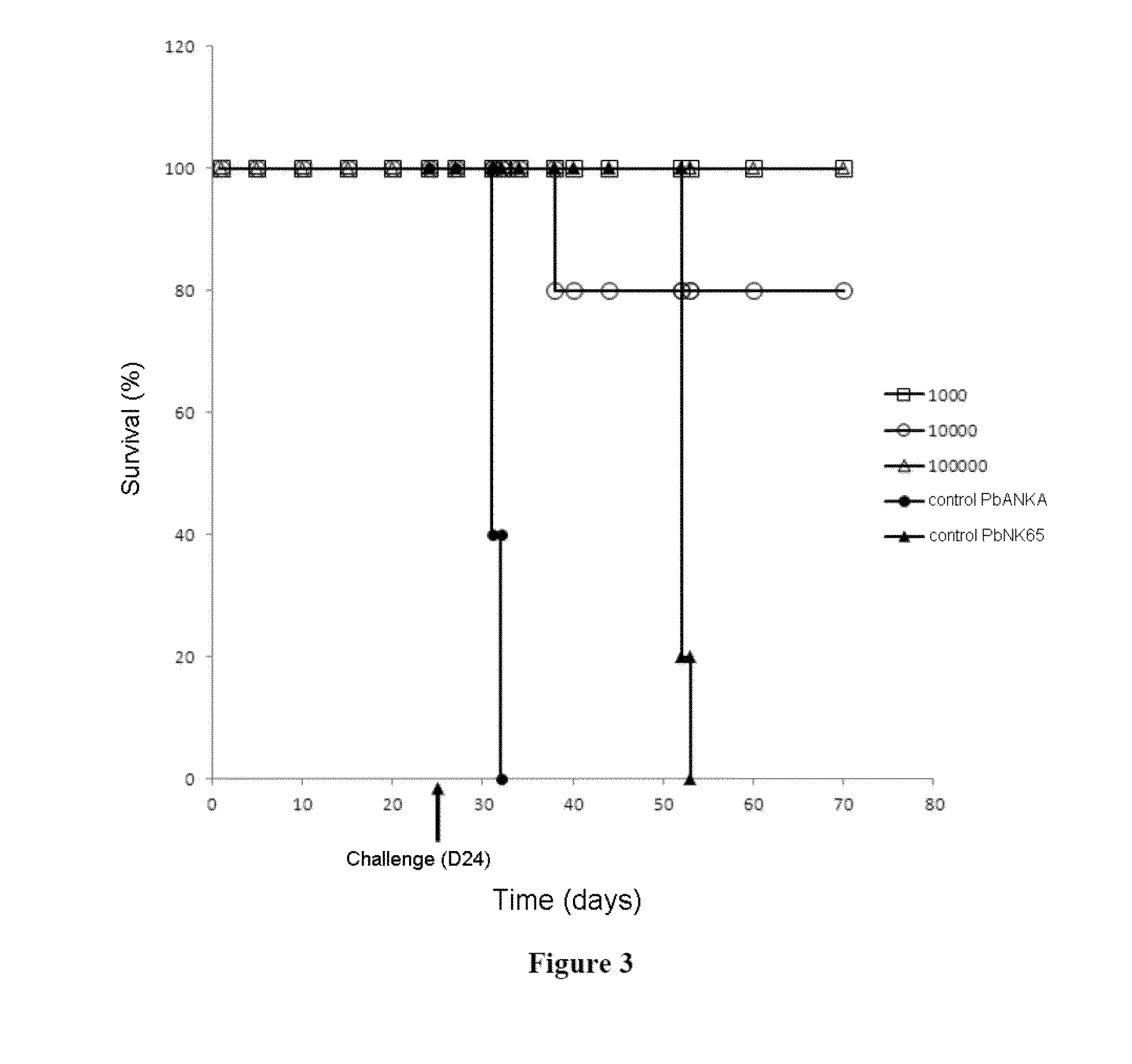Attenuated plasmodium with deactivated hmgb2 gene, as vaccine
a technology of plasmodium and hmgb2, which is applied in the field of medicine, can solve the problems of complex serious neurological after effects, and inability to fully explain the pathogenesis of cerebral malaria, and achieve the effect of effective and long-lasting protection
- Summary
- Abstract
- Description
- Claims
- Application Information
AI Technical Summary
Benefits of technology
Problems solved by technology
Method used
Image
Examples
examples
[0109]When studying the function of the HMGB proteins, the inventors recently showed that the HMGB2 protein of P. berghei is involved in the establishment of experimental cerebral malaria (ECM) in a model of C57BL / 6 mice infected with the P. berghei ANKA parasite (PbANKA). The inactivation of the hmgb2 gene in PbANKA, without hindering the development of the parasite in the C57BL / 6 mice, nevertheless induces a delay in the establishment of the ECM, or even complete abolition thereof in 65% of cases. Furthermore, it was shown that the administration of recombinant HMGB2 proteins to mice previously infected with PbANKA Δhmgb2 made it possible to restore the development of cerebral malaria.
Materials and Methods
Mice
[0110]The mice used are C57BL / 6 mice (Charles River Laboratories). These mice are sensitive to experimental cerebral malaria (CM-S).
Wild-type Parasites
[0111]The P. berghei ANKA parasite (PbANKA) (MRA-867) induces the death of C57BL / 6 mice due to cerebral malaria in 7 days + / −...
PUM
| Property | Measurement | Unit |
|---|---|---|
| Composition | aaaaa | aaaaa |
| Immunogenicity | aaaaa | aaaaa |
| Strain point | aaaaa | aaaaa |
Abstract
Description
Claims
Application Information
 Login to View More
Login to View More - R&D
- Intellectual Property
- Life Sciences
- Materials
- Tech Scout
- Unparalleled Data Quality
- Higher Quality Content
- 60% Fewer Hallucinations
Browse by: Latest US Patents, China's latest patents, Technical Efficacy Thesaurus, Application Domain, Technology Topic, Popular Technical Reports.
© 2025 PatSnap. All rights reserved.Legal|Privacy policy|Modern Slavery Act Transparency Statement|Sitemap|About US| Contact US: help@patsnap.com


